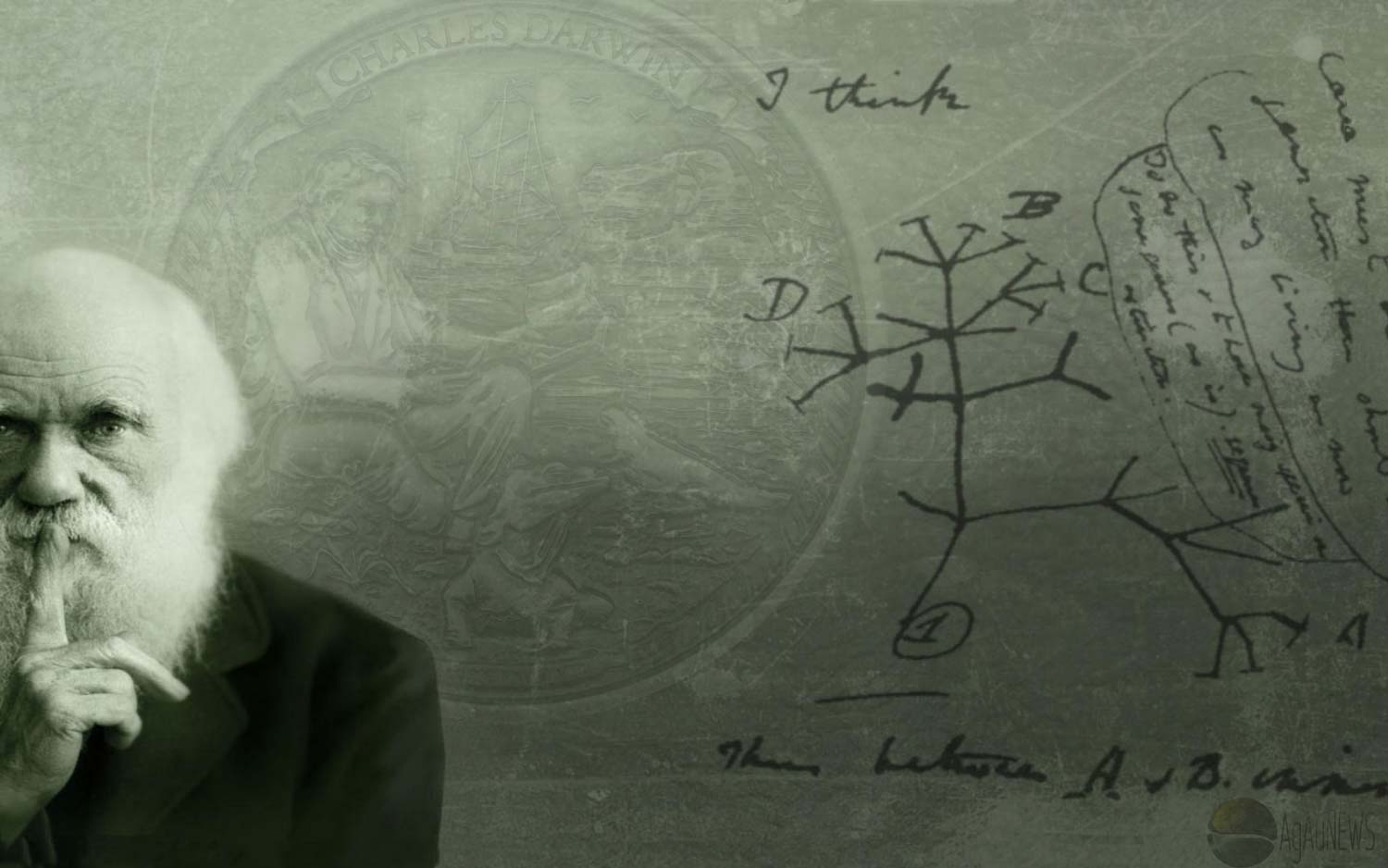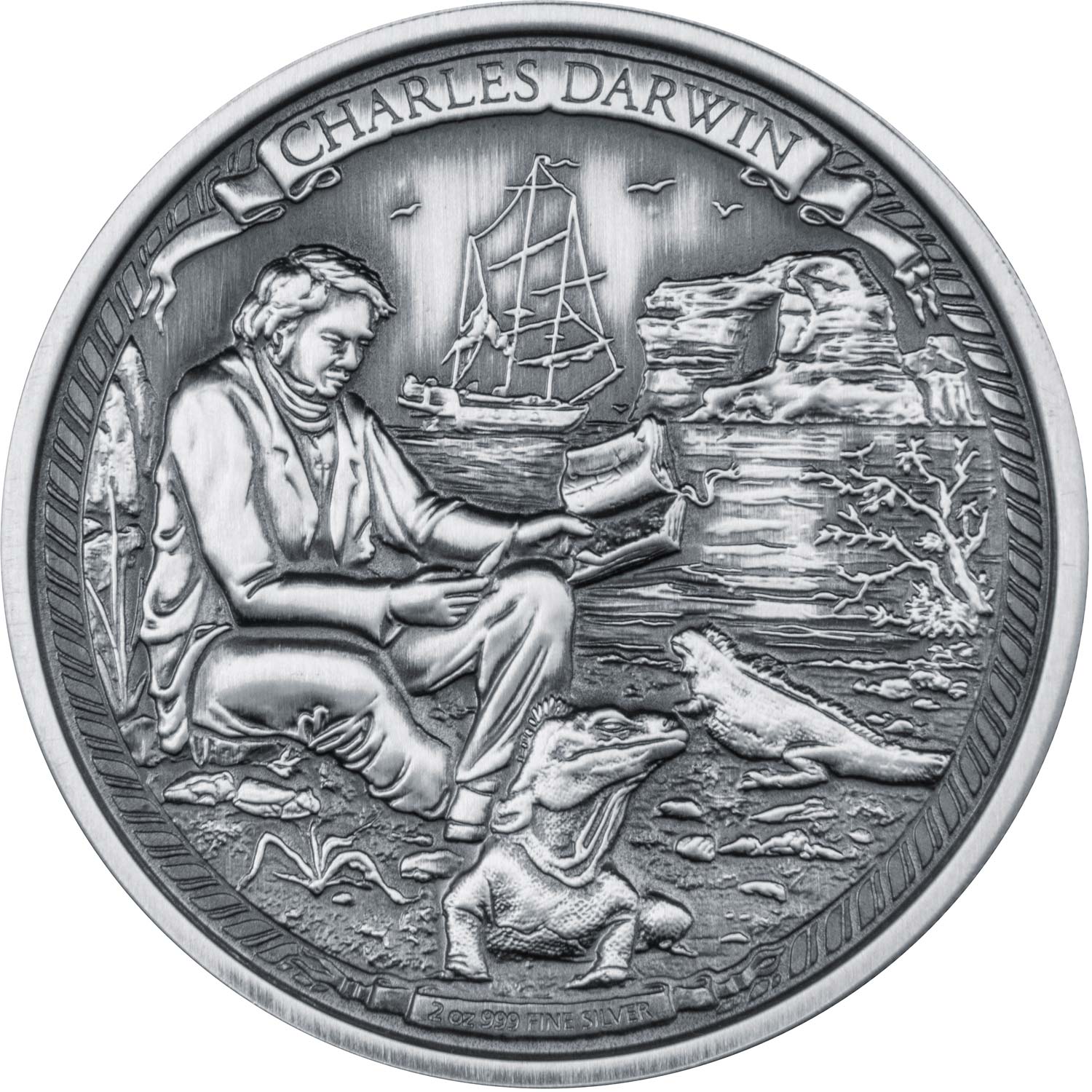Journeys of Discovery hits it’s sixth coin after a debut from the New Zealand Mint just last June, and has built up into a very nice themed set, this sixth coin featuring one of science’s all-time great minds, Charles Darwin. Depicting history’s greatest explorers, the first coin depicted the epic explorer of Asia, Marco Polo. The second coin featured one of the discoverers of North America, Christopher Columbus, with a third and fourth coins depicting the Portuguese explorers Vasco de Gama and Ferdinand Magellan. Last to be released was the great explorer of Africa, David Livingstone.
The design is very much as before, with the reverse carrying a scene of Darwin making notes with his ship, The Beagle, in the background. It seems to encapsulate the popular image of the man completely.
Again, there are no changes to the coin format or the innovative packaging, and as this is coin six in the last nine months. we’re going to assume these are pretty popular. Like earlier coins, this one is more realistic than stylistic, and is a refreshing change of pace from the mythological end of the market. It’s available to order now at the usual $145.00 USD from either the NZ Mint website direct, or from one of the many worldwide dealers that stock them.
CHARLES DARWIN
Charles Robert Darwin was one of the greatest naturalists of the 19th century, renowned for his contribution to the theory of evolution. He was one of the first to claim that man evolved from the ape, causing a furore at the time.
Born in 1809 into a wealthy and well-respected family in England, Darwin grew up with an early interest in the nature.
Young Darwin did not show much interest in education and left school at the age of 16. However, he went on to study at Christ’s College, and it was during this time that his previous interest in nature developed into a passion for natural science.
After graduating in 1831, Darwin first position was that of a naturalist on board the HMS Beagle, which was departing to take a five-year survey voyage around the world.
During his voyage, Darwin had a unique opportunity to observe how the principles of botany, zoology, and geology translated to the field. He collected a vast number of plant, bird, and fossil specimens, documenting these with care. It was during this journey that he began to develop his novel and revolutionary evolutionary theory, which saw life forms evolving from simple to more complex forms over time. Darwin officially introduced his detailed theory of evolution to the Linnean Society of natural history in 1858.
Charles Darwin died on 19 April 1882 and was buried at Westminster Abbey in London. After a life-time of research, his achievement was to literally have changed the way the western world viewed life.
ADVERTISEMENTS
MINTS DESCRIPTION
REVERSE: This antique-finished, fully engraved and high-relief 2 oz silver coin features a tranquil scene of Darwin studying his environment on a remote beach in the Galápagos Islands with iguanas by his feet. The HMS Beagle is moored in the background.
OBVERSE: This features the Ian Rank-Broadley effigy of Her Majesty Queen Elizabeth II.
PACKAGING: This Charles Darwin 2 oz Silver Coin is presented in a timber treasure chest with a uniquely numbered certificate of authenticity. This in turn sits within a draw string sack, modelled on those used to transport materials to trade around the globe on great Journeys of Discovery throughout history.
SPECIFICATION
| DENOMINATION | COMPOSITION | WEIGHT | DIAMETER | FINISH | MINTAGE | BOX / COA |
|---|---|---|---|---|---|---|
| $5 NEW ZEALAND | 0.999 SILVER | 62.2 g | 41.0 mm | ANTIQUE | 2,000 | YES / YES |










Leave A Comment